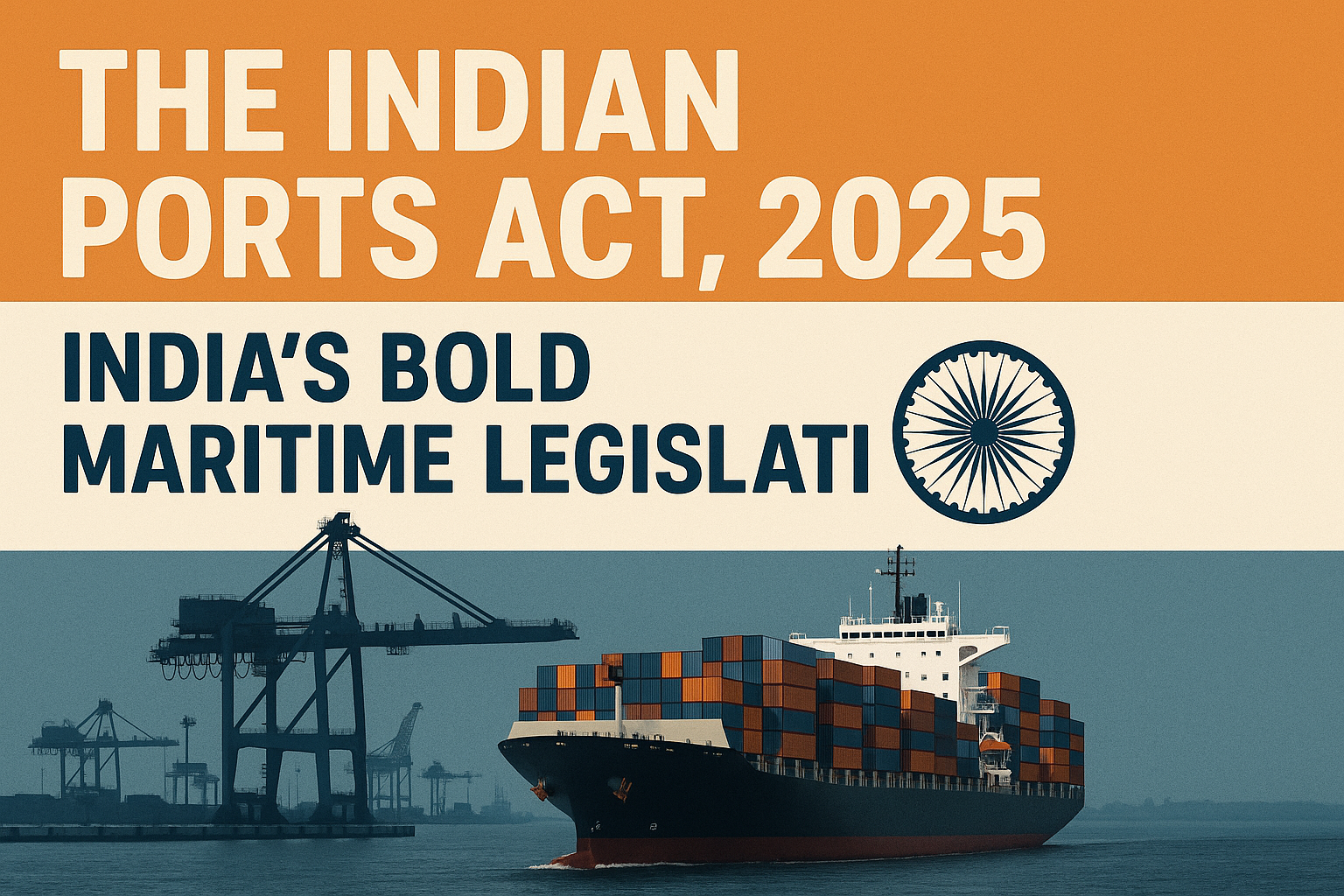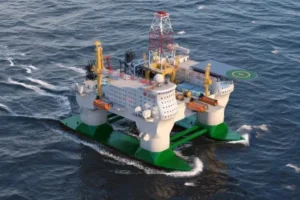Key Highlights at a Glance
- Replaces the outdated Indian Ports Act, 1908 with modern regulations.
- Establishes Maritime State Development Council (MSDC) as a statutory consultative body.
- Mandates Global Green Norms & Disaster Preparedness at ports.
- Promotes digitalisation, simplified procedures, and Ease of Doing Business (EoDB).
- Strengthens Centre–State coordination for integrated maritime development.
Why This Act Matters
Role of Ports in India’s Growth
- Ports handle ~95% of India’s EXIM (Export-Import) cargo by volume and ~70% by value.
- India has 12 major ports (under the Ministry of Shipping) and 200+ non-major ports (under States).
- Around 65 non-major ports are active in handling cargo, while the rest serve fishing boats and ferries.
- Ports are not just transit points but also:
- Catalysts for industrial corridors
- Generators of employment
- Enablers of urban renewal & regional connectivity
Why a New Law Was Needed
- The Indian Ports Act, 1908 was outdated and colonial in nature.
- India’s rapid trade expansion, logistics modernization, and global competition demanded a contemporary, integrated legal framework.
- Growing importance of sustainability, climate action, and disaster readiness also required updated regulations.
Key Features of the Indian Ports Act, 2025
1. Port Officers & Administration
- Conservator = Port Officer, appointed by the government.
- Powers include:
- Vessel movement within port limits
- Fee recovery
- Damage assessment
- Penalty adjudication
- New responsibilities: disease control, pollution checks, and safety oversight
2. Statutory Bodies Empowered
(a) State Maritime Boards (SMBs)
- Officially recognized under the new law.
- Functions:
- Manage non-major ports
- Plan infrastructure & port expansion
- License port operators & regulate tariffs
- Ensure compliance with safety, security & environmental norms
(b) Maritime State Development Council (MSDC)
- Now given statutory status.
- Key roles:
- Collect & share reliable port data
- Guide national planning & legislative reforms
- Advise on port efficiency & inter-state coordination
- Promote cooperative federalism between Centre & States
3. Dispute Resolution Framework
- Dispute Resolution Committees (DRCs) in states for non-major ports.
- Disputes may involve:
- Concessionaires (private players)
- Users & service providers
- Appeals go to High Courts (not civil courts).
- Arbitration & ADR (Alternative Dispute Resolution) also encouraged → ensures speedy, transparent settlement.
4. Tariff Regulation & Transparency
- Major Ports:
- Tariffs set by Board of Major Port Authority or Board of Directors (if corporatized).
- Non-Major Ports:
- Tariffs decided by State Maritime Boards or their concessionaires.
- New Mandate:
- Tariffs & charges must be published digitally → enhances transparency & EoDB.
5. Safety, Security & Sustainability Provisions
- Safety Rules:
- Strict penalties for damaging buoys, mishandling combustibles, or safety violations.
- Environmental Safeguards:
- Aligns with MARPOL (marine pollution) & Ballast Water Management Convention.
- Pollution control systems mandatory.
- Regular central audits for compliance.
- Disaster Preparedness:
- Mandatory emergency response plans & disaster drills.
- Focus on climate resilience and green port development.
Digitalisation & Modernisation
- Maritime Single Window System → one-stop digital platform for clearances & procedures.
- Advanced Vessel Traffic Systems → reduce congestion & improve navigation.
- Port automation → lowers cost, increases efficiency, improves global competitiveness.
Transformative Impact of the Act
Consolidation & Development
- Unifies scattered port laws into a single modern framework.
- Promotes integrated, strategic, and sustainable port development.
- Enhances Ease of Doing Business.
Institutional Strengthening
- Empowers State Maritime Boards.
- Establishes MSDC as a key advisory & coordination body.
Safety, Sustainability & Compliance
- Ensures pollution control, emergency preparedness, and port security.
- Aligns with international conventions to strengthen India’s global maritime credibility.
Environmental Protection
- Introduces stricter measures for protecting marine ecosystems.
- Encourages green technologies & renewable energy adoption at ports.
Dispute Resolution
- Creates fast-track adjudication mechanisms.
- Boosts investor confidence by ensuring transparent conflict resolution.
Conclusion
The Indian Ports Act, 2025 is a historic maritime reform that replaces colonial-era legislation with a modern, transparent, and future-ready framework. By empowering states, simplifying port operations, ensuring sustainability, and boosting global competitiveness, the Act sets the stage for India’s emergence as a global maritime leader.
As India marches toward Viksit Bharat @ 2047, this Act is more than a legal reform – it is a blueprint for inclusive growth, regional connectivity, and strategic progress. By embedding digitalisation, environmental stewardship, and cooperative federalism, it ensures that Indian ports not only move cargo but also move the nation forward.







